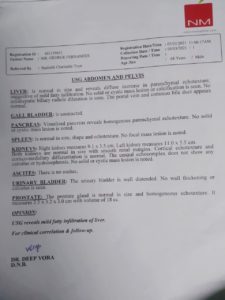Sun Stroke or Heat Stroke is a fatal condition caused due to exposure to excessive heat of Sun
Its also called Non Exertional Heat Stroke (NEHS).
And Exertional Heat Stroke (EHS) is the condition where it is caused due to excessive physical exercise.
As the summer approaches, so does the increase in number of sun stroke or heat stroke cases. In summer of 2015 more than 2500 people died in India. Many of them were from metro cities having best medical facilities. Many more world wide are losing their life to this fatal avoidable medical emergency.
RISK FACTORS of SUN STROKE or HEAT STROKE
- Summer season
- Heat waves
- Humid Climate
- Eecessive physical exertion
- Pre-existing acute infection in body
- Heart diseases
- Skin ailments
- Allergies
- Autoimmune conditions
- Beta-blockers
- Diuretics
- Alcohol
- Drug Abuse
- Smoking
- Diabetes
- Hypothyroidism
- Other Chronic Diseases
- Children and Elderly subjects
It is a medical emergency and requires immediate medical attention, the sooner its detected the better the prognosis and lesser the long term consequenses, yes heat stroke does lead to consequences even after patient recovers from convalscence which was best understood after 1995 Chicago heat wave, when 50% died within a year, and many has disabilities and impairment making them disabled and dependent.
SIGNS and SYMPTOMS of SUN STROKE or HEAT STROKE
- Hyperthermia, Increased body temperature usually above 105°F or 40.6°C
- Headache
- Dullness
- Diziness
- Disorientation
- Confussion
- No Perspiration/ but in Exertional Heat Stroke patient has much perspiration.
- Dry red skin / damp skin if not exposed to heat of sun for prolonged hours and or was in humid climate.
- Symptoms might not be much evident if patient is in sleep.
- The disease soon progress to show severe sypmtoms like unconsciousness, seizures(usually in children).
- Rhabadomylosis
- Organ failure, kidney and heart in particular
- And death ensues.
It is important to judge the condition earliest but its also difficult as initially patient doesnt realise that its a sun stroke and carries on with the mild discomfort he is experiencing and soon symptoms starts progressing.
So its necessary to educate people about its causes, how to prevent it, occurence of symptoms and what to do at first if doubted.
PREVENTION of SUN STROKE or HEAT STROKE
Dont’s to prevent Sun stroke or heat stroke avoid following things
- Exposure to heat for long
- Excessive exercise or exertion especially in hot climate especially military personals, athletes, fire fighters and other straineous activity workers in hot climate needs to take extra precautions.
- Sitting in car without aircondition it frequently happens when car is parked. Even when out side temperature is around 20-21°C the temperature inside car can reach upto 49°C , without the aircondition and when parked even with slight window open.
- Leaving behind children and elderly in parked car.
- If the climate is too hot and humid and you are with children dont neglect or forget the fact that they are more prone to the condition comparatively, and u may subject them to it and this happens too frequently which is why its now commonly termed by laymen as “Neglected Baby Syndrome” a non medical term famous tailored by laymen which discribes the situation and not the disease.
- Avoid stimulants, smoking, alcohol and drugs in hot climates.
- In acute infection or other acute illness avoid being in hot humid climate for too long.
- In chronic ailments especially metabolic disorders or allergies or autoimmune conditions avoid prolonged exposure to heat or exertion.
- If you are on beta-blockers or other diuretics, then avoid exertion or heat exposure.
- Avoid heat exposure or exertion in heart or kidney disease.
Do’s to prevent Sun Stroke or Heat Stroke
- Drink ample of water in short intervals of time even if u are not feeling thirsty, in hot climate, also note excess of water in electrolyte imbalanve may be counterproductive and dangerous.
- Keep sipping commercially available isotonic sports drink.
- Maintain you urine colour light, dark urine colour shows signs of lack of water, urine colour is better indicator than the feeling of thirst.
- Eat lots of salads and be more on liquids if you in hot climate.
- Wear loose, white, thin, clothing a cap or hat with ample ventilating holes and large brim helps protect from heat.
- Keep searching shades and cool places and halt for a while if u are walking in hot summer sun.
- Keep body dry keep wiping body sweat.
- Block direct heat of Sun.
- Know the causes, prevention, signs and symptoms and first aid of Sun Stroke or Heat Stroke
TREATMENT of SUN STROKE or HEAT STROKE
Patient should be first taken under proper medical observation as soon as possible when ever available.
- First and foremost aim is to bring down body temperature and to hydrate the patient.
- Mechanical means to cool the patient as soon as possible can be applied.
- Remove all clothes of patient and wipe off all sweat and make his body dry.
- Cool and dry climate should be provided airconditioned room preferably or highly ventilated cool dry climate.
- Avoid cold wet cloth wraps generaly on whole body. It might act as insulation and prevent heat to escape out from the body. Instead use cold packs only on head, neck, torso and groins, let rest of the body be open.
- Bathing the patient in cold water is a good idea. Immertion in too cold water water is also a good idea. Both of these were previously opposed, due to the doubts of vasoconstriction of superficial blood vessels, preventing heat to escaping out of body. However more practical evidence and study have proved it to be useful.
- Hydration of patient should be done simultaneous. Excess of water in presence of electrolyte imbalance can make case worse, so isotonic sports drinks comercially available are good option.
- Intravenous fluid infussion whenever required, keeping in chk the electrolyte imbalance and accordingly infusing the indicated IV Fluid.
- CRP and other measures in complicated cases in hospital setup.
HOMOEOPATHIC MEDICINES for SUN STROKE or HEAT STROKE
General guidelines for Homoeopathic medicine section for sun stroke or heat stroke
While Selecting Homeopathic medicines for Sunstroke or Heat Stroke one needs to first understand that Heat Stroke is a fast progressive acute condition.It is caused due to excessive heat causing disturbed thermo-regulation of the body, with loss of water from body altering electrolytes and enzymatic processes of cellular respiration.
So one need to be very careful about related aspects that can not be neglected which are as follows:
- Medicines needs to be fast and deep acting with more affinity towards CNS Heart and circulatory system along with urinary system.
- Such cases demands frequent repetition of doses.
- Type of thirst pattern of medicine and that in patient with sunstroke are of utmost importnce.
- Skin symptoms with characteristic appearance and texture cant be neglected.
- Also make note of the characteristics of patient’s tongue appearance and try to match with remedy
- Characteristics of Urine and Urinary system needs to be evaluated with much attention.
- Fever and headache pattern and other concomittants during fever like general condition, delirium level of consciousness etc are important.
- Pulse pattern needs to be observed.
- Neupsychiatric condition evaluation is must.
- Acessesment of all other organs especially heart and kidney is necessary to rule out complications.
Such cases needs to be managed under highly trained medical staff.
Homoeopathic medicines can be administered along with regular medical supportive management.
Following are some Homoeopathic Medicines for Sun Stroke along with their indications.
Strictly to be taken under guidance and observation of qualified homoeopathic doctor and medical staff.
ACONITUM NAPELLUS –
Fever and Headache Acute violent sudden onset of acute heavy pulsating headache with sensation as if head floating in boiling water. Acute onset of violent fever with fear, fright and anxiety especially fear of death with mental restlessness. Complaints caused due to dry climate and extremes of heat or cold. Much indicated in very first stage of sunstroke, the sooner you give better the results. This remedy is indicated only in functional disturbances there is no evidence of aconite being useful where there are gross pathological changes also its effect is very short without any periodicity.
Thirst – intense thirst, drinks and vomits and declares himself that he will die.
Tongue -Dry red constricted tongue with white coating and tingling on the tip of tongue.
Urine – scanty, red, hot, painful.
GLONOINUM
A theraputically specific remedy for sunstroke in homoeopathic materia medica, which can be applied in general with much benefits in most of the cases of sun stroke.
Headache and Fever –Surge of blood to the head and heart. Aggravation due to exposure to heat of fire or heat of sun. Sensation of pulsation throughout the body. Throbbing headache with diziness and confusion, cannot recognise localities. Head heavy but cannot lay it on pillow as he cant bear any heat around head and also it aggravates throbbing rush of blood to head, visual disturbances during headache sees everything half light half dark with visions of sparkling light.
NATRUM MURIATICUM –
A known remedy for sun stroke and complaints due to heat of sun better given in biochemic form especial in children and female of pre-pubertal and early pubertal age affected with sun stroke effects in early stages. Throbbing blinding headache with sensation as if thousands of little hammers were knocking.
Thirst -unquinchable thirst for cold drinks, desires salt.
Tongue -Mapped tongue frothy coated tongue with cracked lips with numb sensation.
Skin – Greasy and Earthy texture , Blistering redness with much burning due to sun burns with dry sensation.
Urine – pain in urethra after passing urine, involuntary urination.
BELLADONNA–
Headache and Fever-Very well indicated when there is severe headache with throbbing heat especially in forehead and temples with vertigo and high grade fever and difficukty in breathing
Tongue – Dry, Swollen glazzy and Painful with red edges, Strawberry like appearance of tongue due to elevated buds and papillae of tongue,dry throat.
Thirst –Great thirst for cold water with nausea and vomitting and spasm of stomach, but thirstless during fever.
Urine –Scanty dark turbid with phosphates.
Skin – Dry, Hot, Swollen, Smooth.
GELSEMIUM SEMPERVIRENS –
Headache anf fever –Indicated in both initial and later stages of Sun Stroke. Fever with delirium diziness, disorientation, confusion, trembling, tremors, in seizures due to sun stroke. Face is heavy flushed besotted during fever.
Thirst: Thirstless with heaviness in stomach
Tongue: Numb with thick yellowish coating feels paralysed.
Urine: Dysuria with tremulousness
Specific Biochemic Twelve tissue remedies can be given for electrolyte imbalance in all cases in general
Also Read







